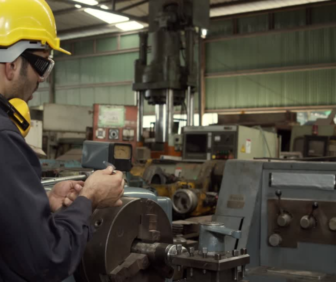The basic change in the economy we have been documenting for more than two decades is the transition from a ![]() factory-based to a knowledge-based economy. More broadly from a goods-producing to a service-providing economy. One where good-paying jobs are now concentrated in knowledge-based services.
factory-based to a knowledge-based economy. More broadly from a goods-producing to a service-providing economy. One where good-paying jobs are now concentrated in knowledge-based services.
The new 2016-2026 employment projections from the Bureau of Labor Statistics predicts a continuation of those trends. Growth concentrated in higher-wage professional and managerial occupations and lower-paid, low-education attainment predominately service-providing occupations.
In this post I want to focus on what has happened and is projected to happen to employment in traditional blue-collar occupations for the past decade and the next. Some goods-producing––production; and construction and extraction. Some service-providing––transportation and material moving; and installation, maintenance, and repair.
These occupations are important both because of the role they played in creating a mass middle class here in Michigan and across the country over the last half of the 20th Century. And that they are, once again, occupations that many business leaders and public officials are pushing other’s kids to go into rather than pursuing a four-year degree to go into professional and managerial occupations.
In 2006 there were 35.1 million payroll jobs (working for an employer) in the four blue-collar occupational groups. 23.3 percent of all non-farm payroll jobs. In 2016 there were 32.4 million payroll jobs in the four collar occupation groups. The share of jobs falling to 20.8 percent. The projections for 2026 are that the four blue-collar occupation groups will provide 33.8 million jobs. The share of jobs is projected to fall further to 20.2 percent.
One caution in using the projections is that the 2006-2016 projections way overestimated the growth in jobs in the economy in general, particularly in the blue-collar occupation groups. The projections were for blue-collar growth of 1.3 million jobs. Instead we got a loss of 2.7 million jobs. The projected share of jobs was 23.3 percent, instead it was 20.8 percent.
The reality is projecting employment in general and even more so by occupation for the next decade is difficult. There is too much uncertainty about the economy, the size of the labor force, the impact of automation, changes in consumer demand, etc.
Our best guess is––largely because of demographics (low current unemployment rate and the retirement of boomers)––that the overall projection of more than 11 million new jobs over the coming decade compared to 6 million last decade is too optimist. And that the blue-collar occupations projections are too optimistic as well. But who knows.
But whether the projections are right on, too optimistic or too pessimistic, it is highly likely that the decades long trend of blue-collar work having a smaller and smaller share of total employment will continue.
That is particularly true of production jobs. Nearly everyone’s priority one in growing the state’s and nation’s middle class. It is the only one of the 22 occupation groups that is projected to lose jobs the next decade. From 9.4 million to 9.0 million. After a decade of jobs declining from 10.7 million to 9.4 million. If the projections are accurate, production’s share of jobs will have fallen from 7.1 percent to 5.4 percent from 2006 to 2026.
And despite the conventional wisdom that production jobs are high wage, the median wage for production jobs in 2016 was $33,100. Compared to $37,040 for all jobs. So production is now a below-median-paying occupation. Of the 22 occupation groups only seven have lower median wages.
One of the seven is transportation and material moving. Its median 2016 wage was $30,730. The other two blue-collar occupation groups have a median wage above the national median for all jobs. The 2016 median wage for construction and extraction was $43,600. For installation, maintenance and repair it was $43,400.
Of the nine occupation groups where professionals and managers and those with a four-year degree or more are concentrated only community and social service occupations with a median 2016 wage of $42,990 have a median wage below construction and extraction and installation, maintenance and repair. Just to be clear there is no occupation group where professionals and managers are concentrated with a lower median wage than either production or transportation and material moving. Including the occupation groups where liberal arts majors are concentrated.
So the big picture is blue-collar occupations are a shrinking component of national employment and are not high-paying occupations. Yes there are good-paying jobs available today and there will be good-paying jobs a decade from now in blue-collar occupations. But far fewer and at lower pay than conventional wisdom.
And no, it is not true, that other’s kids would be better off preparing for jobs in these occupations rather than pursuing a four-year degree. There are both far more jobs and job growth in professional and managerial occupations than blue-collar occupations and the professional and managerial occupations are better paying.







